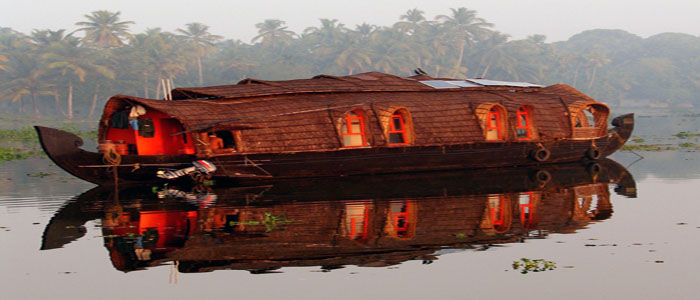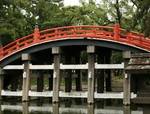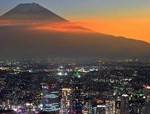
India Travel
India with a cultural history stretching back thousands of years, incredible local wildlife, a range of cultures and religions, stunning scenery and world-famous cuisine, India is an intoxicating cultural experience for any traveller. Our range of group tours and tailor-made holidays to India take in all the highlights, as well as ensuring plenty oflocal interaction. Why not try our festival tours of India and get a new perspective on some of the most fascinating cultures and customs on the planet? For all your India travel and tours requirements contact us.
India travel country fast facts:
Voltage
Standard voltage is 230-240V (usually 240V). Pack a universal travel adaptor that will allow you to use a hairdryer, electric shaver, charge a mobile phone and other electrical items. Take care with your choice of adaptor. Be sure that it is suitable for India, as Indian sockets accept round 3 pin plugs that are similar but not identical to European plugs.
Time
India is 5 hours 30 mins ahead of GMT. India does not observe Daylight Saving. During British Summer Time (end of March through to end of October), India is 4.5 hours ahead of GMT.
Climate
India is such a vast country that the climatic conditions in the far north bear little relation to those in the extreme south.
India travel seasons:
India has a three-season year known as the hot, the wet and the cool.
Cool Season:
The coolest time to visit is late-September through April. Temperatures during this time are ideal for sightseeing.
Hot Season:
Following this period is the hot season that runs from around April through to July. Conditions are perfect for sightseeing and photography, though Rajasthan can become very hot and dry.
Wet Season:
July signals the start of the monsoon or wet season that continues until around the end September. Although the weather is humid, the days are punctuated by intermittent rainfall. Monsoon rains are nowhere near as miserable as the cold and rainy days experienced in Europe though!
Average Max Temp °C
| City | Jan | Feb | Mar | Apr | May | Jun | Jul | Aug | Sep | Oct | Nov | Dec |
| Delhi | 20 | 23 | 29 | 36 | 39 | 37 | 34 | 33 | 34 | 32 | 28 | 22 |
| Mumbai | 31 | 31 | 33 | 33 | 33 | 32 | 30 | 30 | 31 | 33 | 33 | 32 |
Money
Pound Sterling, US Dollars or other major currencies can be exchanged into Indian Rupees locally, as the Rupee is presently exchangeable only in India. The Rupee is non-exportable, so spend it all before you leave! Exchange facilities are available at major airports and bureau de changes and to a lesser degree, ATMs/cash machines exist in larger towns. Request a broad mix of note denominations, as smaller notes will be handy for small purchases and perhaps gratuities/tipping (if undertaking a tailor-made India holiday arrangement).
Health
It is recommended that you be vaccinated for Tetanus and Polio, if you haven’t had a booster in the last ten years. Food and waterborne diseases are more common, so we recommend vaccinations for Typhoid (valid 3 years) and Hepatitis A (validity varies). You are also advised to take anti-Malarial medication. This information is only intended as a guide and recommendations can change regularly so please consult with your local healthcare provider.
Water
Only drink bottled mineral water which is readily available. You should also avoid salads which may be washed in unhygienic water.
Food
Indian food is simply delicious! Rice is the staple, coupled with tasty Indian breads such as roti, paratha and naan. Although all Indian food is certainly not curry, it does form its base. Contrary to popular belief, Indian food is not so hot it’s unbearable; it is aromatic and delicate in flavour. You will have plenty of opportunities to sample some fantastic and authentic Indian food while on holiday!
Tandoori food – is a Northern speciality referring to the clay oven in which food is cooked after first being marinated in a mixture of herbs and yogurt. Biryani is another Northern Mughal dish. The consistently tasty and cheap Thali is an all-purpose Indian dish. Originating from South India, it consists of a variety of curry dishes, relishes, poppadums, chapatis and rice. Indian snacks such as bhajis and samosas are a tasty treat. Originally from Southern India but now found all over India are dosas – a paper-thin savoury pancake made from lentil and rice flour.
If your sweet tooth is not up to the challenge of Indian sweets such as gulab jamun, kulfi and ras gullas, you’ll be able to fall back on India’s incredibly wide range of fruit. Good Chinese food can also be found, as well as American style fast food. Continental cuisinealso features on most menus. Lastly, please ensure that you eat meat only in high class establishments since quality and hygiene does vary considerably.
Travel by Train
Travelling by train is one of the great experiences in India and a good way to meet Indian people. Some of our group tours and tailor-made India itineraries include comfortable train journeys.According to the itinerary, these may be during the day or night. See the individual tour for details.
The Indian Railway system is the world’s 2nd largest, with over 108,706 km of track, connecting more than 7,000 stations. Every day, more than 7,000 trains run, carrying some 14 million passengers.
If travelling overnight, we accommodate passengers in the comfortable 2nd class sleeper air-conditioned category (unless otherwise indicated at a higher level). 2nd class sleeper air-conditioned cabins consist of 2 upper and 2 lower bunks (which are sat upon until retiring to bed), shared by you and other Indian travellers. Some smaller cabins comprise 1 upper bunk and 2 lower chairs that are for seating until retiring to bed, when these 2 lower chairs can be easily converted to a lower bunk. All cabins are mixed sex. Your cabin is not a self contained as such.‘Cabins’ are separated from the carriage corridor by curtains, serving as an artificial barrier that can be drawn at night. Luggage can be stored underneath the lower bunks or on the floor. The carriage is manned by an attendant who will distribute linen. Dependent upon the service, a variety of snacks and drinks or full dinner service can be ordered at additional cost.Food aboard the Shatabdi Express train is exceptionally good, though on many other train services it is probably best to buy snacks, fresh fruit or meals prior to the start of your journey. In addition, there are WC facilities (European and also ‘squat-style’) at each end of the carriage. Cleanliness varies, so be prepared and take your own anti-bacterial hand wipes and toilet paper.
If travelling on a daytime journey, you will travel in an air-conditioned seated carriage (or 2nd class air-conditioned cabin), except to elevated destinations where due to local weather patternsair-conditioning is not necessary.
Shopping
India is a virtual Aladdin’s Cave. At the many bazaars known as ‘chowks’, the cardinal rule is to bargain hard. State run craft emporiums that stock the best of what a particular state has to offer can give you a reasonable idea of what is acceptable in terms of price and quality. Carpets of quality equal to those of Persian origin, Rajasthani pottery andmetalwork embellished slippers known as jootis, jewellery in breathtaking designs, leatherwork, woodcarvings, silks and saris in spectacularly colourful designs, paintings and clothing are well priced and make excellent souvenirs.
Trading Hours
Banks are open from 1000hrs – 1400hrs Monday to Friday and 1000hrs-1200 on Saturday. Variations occur, so please check locally. In some tourist centres, there may be Bureaux de Changes that remains open later.
Shops are open 0930hrs – 1800hrs Monday through to Saturday. In established markets, shopping hours usually stretch on until night falls. Market trading days and business hours vary, check before locally.











